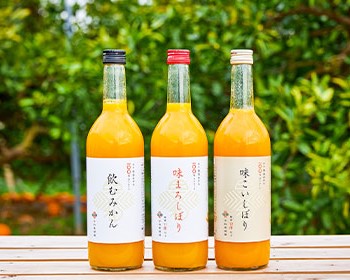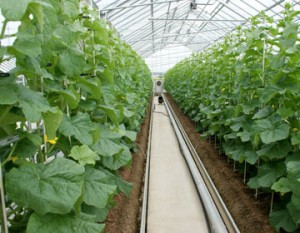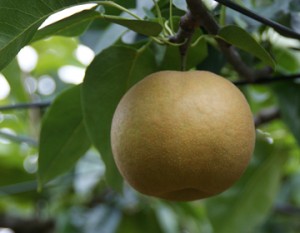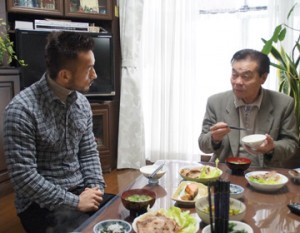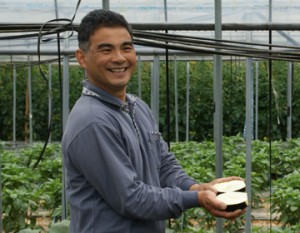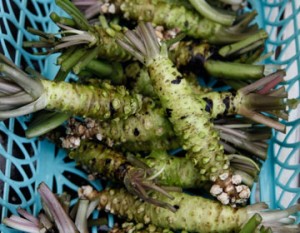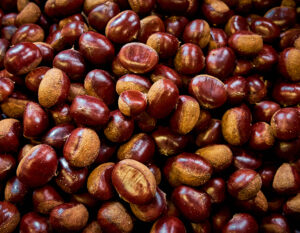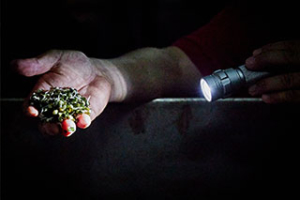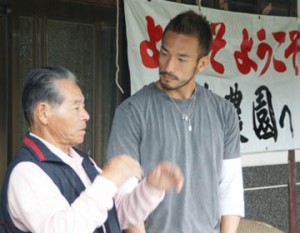An orchard that handles the entire process of producing, processing, and selling the Arita mikan brand of mandarin oranges.
The Arita region of Wakayama Prefecture is said to be a region with a natural environment suitable for the cultivation of mandarin oranges,
Its history is said to be as old as 1574.

When one hears the word “mikan”, Ehime and Wakayama come to mind. Wakayama Prefecture, where Sowa Kajuen is located, is the largest producer of mikan in Japan. The “Arita Mikan” brand oranges grown at this orchard, which handles everything from production to processing and sales, are different in taste from any other oranges I have ever tasted.
No. 1 in the nation’s oranges production ranking

In the first year of Reiwa, the total mikan production harvested in Japan was approximately 750,000 tons. Wakayama Prefecture produced 150,000 tons, the most of any prefecture in Japan. Of these, Arita City in Wakayama Prefecture produced 80,000 tons, accounting for about 10% of the nation’s total production. The mandarin juice produced here is from Sowa Kajuen, which Hidetoshi Nakata praises as “completely different” from other juices he has tasted.
A History of Revival for Declining Tangerine Consumption
It is said that mandarin oranges have been grown in this area for more than 400 years. From the late 1965’s to the beginning of the 1950’s, about 3.6 million tons were produced nationwide. There were 5,000 mikan farmers in Arita. But later, as prices dropped due to overproduction and various citrus fruits were imported from overseas, production dropped rapidly, and now it is 700,000 to 800,000 tons. Currently, production is 700,000 to 800,000 tons, about 20% of what it was in its heyday,” says Shingo Akitake, chairman of Sowa Kajuen.
In 1979, during such a “difficult time for oranges,” seven progressive farmers in the region got together and established the “Sowa Kyosen Kumiai,” the predecessor of Sowa Kajuen. In 1979, seven progressive farmers in the region gathered to form the “Hayawa Kyosen Kumiai,” the predecessor of Sowa Kajuen. The result of this process was the superb mikan juice “Ajiichi-shibori” (now called “Aji Koishibori”).
When we first made it, we had a sales representative from a department store try it, and he said, ‘I’ve never had a juice like this. The first time we made this juice, we asked a sales representative at a department store to try it, and he said, ‘I’ve never had a juice like this, so let’s go with a strong price. I was skeptical that a juice that cost more than sake would sell, but after tasting and selling it, people kept buying it. At first, it caught fire in Tokyo, but gradually it began to sell well in the local market as well.
Delicious mandarin oranges using the latest technology

Sowa Kajuen has been flexibly adopting new technologies, such as a light-sensor fruit-sorting machine to ensure consistent quality, the introduction of the “Mardori method” for quick moisture and fertilizer management, new cultivation using a cloud system, and garden management using a drone. In addition to growing delicious oranges, the company has also been actively engaged in developing products that utilize its oranges in their full flavor. The company uses the “chopper-pulper method,” in which mandarin oranges are softened by steam and then peeled one by one by hand before being put through a backing machine, preserving the flavor in the processed products when you put them in your mouth.
There’s a reason it tastes so good
Normally, we make juice from fruit that is not for sale, but in our case, we select and squeeze only the best oranges, and that’s why it tastes the way it does. That’s why it tastes the way it does.
The straight juice made from 100% pulp of Arita mandarins grown in Wakayama Prefecture is “Arita mikan” itself. The juice is made from the pulp of Arita mandarin oranges grown in Wakayama Prefecture, and the juice is made from the pulp of the mandarin oranges themselves. The juice contains the nutritious fibers that have been broken up into small pieces through a three-stage process of pressing while the skin is being removed. The thick jelly made with 91% of the juice, without adding a drop of water, tastes as if you were eating the Arita mandarin directly, which explains why it is so popular.
It’s worth eating now
As the consumption of mandarin oranges has declined due to the diversification of food and changing tastes, Sowa Kajuen’s extensive lineup of oranges will be useful as souvenirs and gifts. Arita mandarins produced in this region are also expected to have various health benefits. For example, Arita mandarins, which fall under the category of Onshu mandarins, contain a component called β-cryptoxanthin, which has been reported to be effective in inhibiting cancer. Other benefits include the prevention of colds, anti-allergic effects, and improvement of skin quality due to the abundant vitamin C and other nutrients, all of which are worth picking up in these stressful times.

Front left and center: Ajiichi Jule (now renamed “Smooth Mikan Jule from Sowa Kajuen”)
Front row, right: Golden Jam (now renamed “Sowa Kajuen’s Smooth Mikan Jam”)
Middle row, left: Aji Koishibori 180ml
Middle row center: Aji Mellow Shibori 180ml
Middle row right: Drinking Mikan 180ml
Back row left: Mikapon 360ml
Back row right: Ofukuro Smoothie 170g

Good tasting oranges alone do not necessarily guarantee sales, but it is also true that if they do not taste good, people will not pick them up. We always make every effort to deliver the best taste of mikan. With this as our basic philosophy, we continue to take on the daily challenge of producing delicious mikans.



